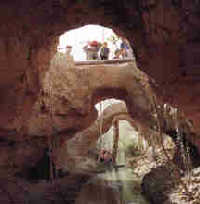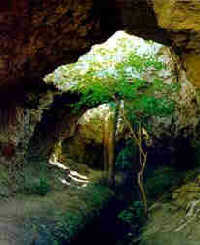| |
Karez
( 2005-09-13 )
 TheKarez, an irrigation system of wells connected by underground canals, is considered as one of the three great ancient projects in China, the other two being theGreat Walland theGrand Canal. It was invented and built by the ancient people of various ethnic groups in Northwest China'sXinjiangUygur Autonomous Region to adapt to the natural environment in the dry region, and by taking advantage of the mountain slopes. TheKarez, an irrigation system of wells connected by underground canals, is considered as one of the three great ancient projects in China, the other two being theGreat Walland theGrand Canal. It was invented and built by the ancient people of various ethnic groups in Northwest China'sXinjiangUygur Autonomous Region to adapt to the natural environment in the dry region, and by taking advantage of the mountain slopes.
In Xinjiang, the Karez wells are mainly distributed in the Hami,Turpan, and Mori areas, but they are mostly in the Turpan Basin, where, at its peak, there were altogether 1,100-odd Karez wells totaling 5,000 kilometers in length, hence the moniker of "the underground canal."
Why were the Karez wells built in great number in the Turpan Basin? The answer is due to the local natural geographical conditions. To the north of the Turpan Basin is the Bogeda Mountain and to its west, the Kalawucheng Mountain.
 In summer, large amounts of melted snow water and rainwater flow down from the mountains into the valleys, then infiltrate into the ground, thereby making an underground current, leading to an adequate underground water source for the Karez wells. Besides, the earth in the Turpan Basin is solid and good for building wells and underground channels. In summer, large amounts of melted snow water and rainwater flow down from the mountains into the valleys, then infiltrate into the ground, thereby making an underground current, leading to an adequate underground water source for the Karez wells. Besides, the earth in the Turpan Basin is solid and good for building wells and underground channels.
In the basin, it is very dry and hot in summer, with a high evaporation rate. In the windy season, the strong wind blows sand into every corner, often burying a lot of farmlands and water channels in sand. But the Karez, unaffected by the season and sand, can continue supplying water through underground channels. In addition, the Karez, with a very low evaporation rate and a stable supply of water, can irrigate farmlands all the year round.
|
|

